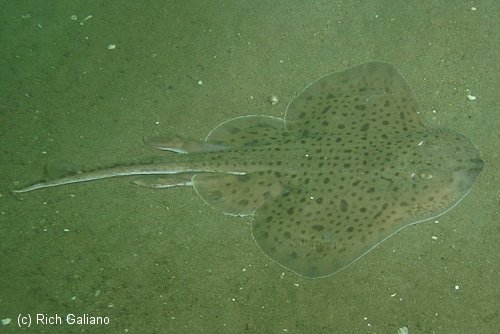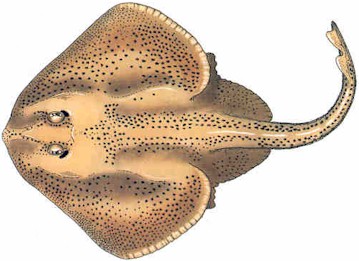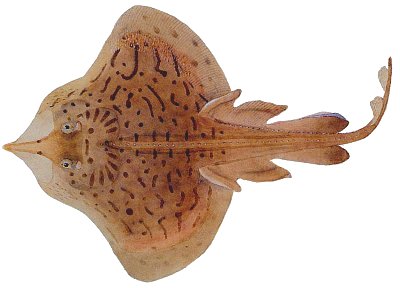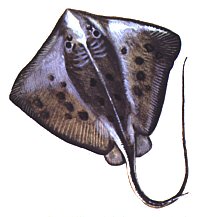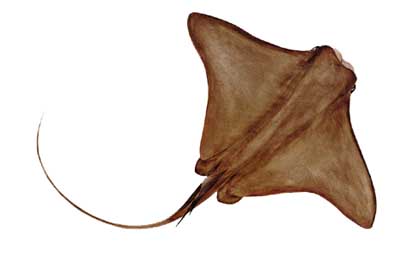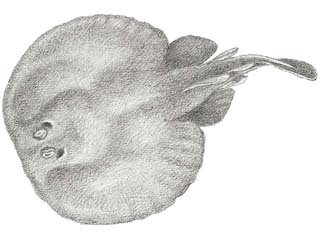Raja erinacea
Size: to 21" long
Habitat: Soft sandy bottoms, in depths from shallows to 300 ft.
Notes:
The commonest inshore skate. Short tail with two fins but no stinger. Winter Skate similar but larger, to 3 ft.
More: Little Skate ...
Raja eglanteria
Size: to 31" long
Habitat: Soft sandy bottoms, in depths from shallows to 300 ft.
Notes:
The Clearnose Skate has a noticeably pointy nose compared to the Little Skate, with a semi-transparent patch on either side of the snout.
More: Clearnose Skate ...
Dasyatis sayi
Size: to 3 ft across
Habitat: Soft sandy bottoms, depths from shallows to 1400 ft.
Notes:
Potentially dangerous
The commonest inshore ray. Long smooth whip-like tail with stinger but no fins. Roughtail Stingray similar but larger. Smaller Atlantic Stingray and larger Southern Stingray may occasionally stray this far north as well.
More: Bluntnose Stingray ...
Rhinoptera bonasus
Size: to 3 ft across
Habitat: Coastal
Notes:
Unlike the other fishes on this page, this is a free-swimming ray, often found near shore in large schools. They generally arrive en masse late in the season and are otherwise uncommon.
More: Cownose Stingray ...
Torpedo nobiliana
Size: to 6 ft long, 200 lbs., and 220 volts
Habitat: Soft sandy bottoms, from water's edge to 350 ft. Uncommon.
Notes:
Potentially dangerous
Distinguishing characteristics: Round body with a short tail and no stingers. This fish can produce enough electricity to stun a swimmer, but it is usually unaggressive. They are uncommon but deserve mention for the surprise they pack. I have seen unaware divers ( including a PADI "Underwater Naturalist" instructor ) get zapped in the tropics by the smaller ( 40 volts ) electric rays there.
More: Atlantic Torpedo ...
